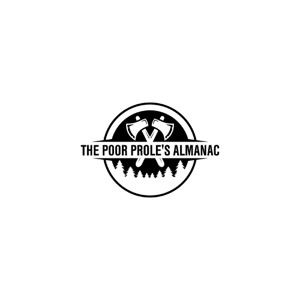Beyond Grass: Exploring the World of Tree Hay/Fodder
The Poor Prole’s Almanac - Podcast tekijän mukaan The Poor Prole’s Alamanac, Bleav

Kategoriat:
This episode of "The Poor Proles Almanac", hosted by Andy and Elliott, is about using tree leaves as livestock feed, a practice known as tree hay or tree fodder. It picks up on themes from previous episodes about silvopasture, coppicing, and pollarding. The episode begins with the hosts bantering about eating giraffe necks. Nutritional Value of Tree Hay The hosts discuss the nutritional value of tree hay, noting that the digestibility of leaves is less impacted by age than that of grasses and forbs. They explain that a mature tree can produce a significant amount of dried leaves annually, far exceeding the dry matter produced by a comparable area of grass. This highlights the potential of tree hay to supplement or even replace traditional hay, especially during times of drought or when pasture availability is limited. Harvesting and Storage Techniques The episode explores various techniques for harvesting and storing tree hay. Listeners learn that harvesting time can be influenced by factors such as tree health, desired regrowth, and intended use of the tree. The hosts emphasize the importance of leaving sufficient branches for the tree to recover and avoid over-harvesting, especially during the wet season when trees are more susceptible to disease. They describe different methods for drying and curing tree hay, including hanging branches in bundles and storing them in a dry, well-ventilated area. Integrating Tree Hay into Grazing Systems The hosts discuss the practical aspects of incorporating tree hay into a grazing system. They advocate for a mixed approach, using tree hay as a supplement to traditional pasture and incorporating a variety of tree species. They point out that some animals, like sheep and goats, are better suited to consuming tree hay than others, such as pigs and chickens. They also explain that the way tree hay is fed can impact its consumption. For instance, livestock may be less likely to eat leaves that have fallen into grazed grass, so keeping the branches upright or offering the hay in a new pasture can improve utilization. Tree Species for Fodder and Their Unique Benefits The episode provides examples of various tree species suitable for fodder, highlighting their unique characteristics and benefits: Black Locust: High in protein, nitrogen-fixing, improves soil quality. Willow: Fast-growing, digestible, high tannin content helps reduce parasite load. Poplar: Similar to willow but without the tannins, high in biomass. Mulberry: Highly digestible, high protein content, produces edible fruit, suitable for both polygastric and monogastric animals. Connecting Tree Hay to Other Silvopasture Practices The hosts link tree hay harvesting to other silvopasture techniques like coppicing and pollarding. They explain that these practices can work together synergistically, providing both fodder and timber while promoting tree health and regeneration. The discussion raises the question of whether harvesting tree hay negatively impacts timber production, but the hosts acknowledge a lack of conclusive research on the topic. The Importance of Experimentation and Observation Throughout the episode, the hosts emphasize the need for experimentation and observation when implementing tree hay practices. They acknowledge that much of the knowledge about tree fodder has been lost and encourage listeners to rediscover and adapt these techniques to their specific needs and contexts. Overall Takeaway The episode provides a comprehensive overview of tree hay, covering its nutritional value, harvesting and storage methods, integration into grazing systems, and species selection. While acknowledging the challenges and knowledge gaps, the hosts encourage listeners to explore this ancient practice as a sustainable and potentially valuable component of their silvopasture systems. For sources, transcripts, and to read more about this subject, visit: www.agroecologies.org To support this podcast, join our patreon for early, commercial-free episode access at https://www.patreon.com/poorprolesalmanac For PPA Restoration Content, visit: www.restorationagroecology.com For PPA Merch, visit: www.poorproles.com For PPA Native Plants, visit: www.nativenurseries.org To hear Tomorrow, Today, our sister podcast, visit: www.tomorrowtodaypodcast.org/

